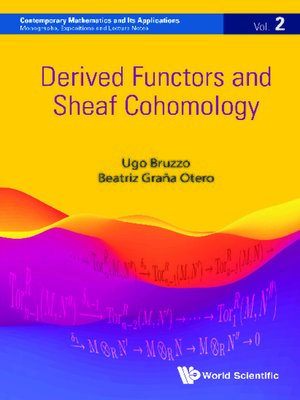Derived Functors and Sheaf Cohomology
ebook ∣ Contemporary Mathematics and Its Applications: Monographs, Expositions and Lecture Notes
By Ugo Bruzzo

Sign up to save your library
With an OverDrive account, you can save your favorite libraries for at-a-glance information about availability. Find out more about OverDrive accounts.
Find this title in Libby, the library reading app by OverDrive.



Search for a digital library with this title
Title found at these libraries:
| Loading... |
The aim of the book is to present a precise and comprehensive introduction to the basic theory of derived functors, with an emphasis on sheaf cohomology and spectral sequences. It keeps the treatment as simple as possible, aiming at the same time to provide a number of examples, mainly from sheaf theory, and also from algebra.The first part of the book provides the foundational material: Chapter 1 deals with category theory and homological algebra. Chapter 2 is devoted to the development of the theory of derived functors, based on the notion of injective object. In particular, the universal properties of derived functors are stressed, with a view to make the proofs in the following chapters as simple and natural as possible. Chapter 3 provides a rather thorough introduction to sheaves, in a general topological setting. Chapter 4 introduces sheaf cohomology as a derived functor, and, after also defining Čech cohomology, develops a careful comparison between the two cohomologies which is a detailed analysis not easily available in the literature. This comparison is made using general, universal properties of derived functors. This chapter also establishes the relations with the de Rham and Dolbeault cohomologies. Chapter 5 offers a friendly approach to the rather intricate theory of spectral sequences by means of the theory of derived triangles, which is precise and relatively easy to grasp. It also includes several examples of specific spectral sequences. Readers will find exercises throughout the text, with additional exercises included at the end of each chapter.






